Where to do gorilla Habituation Experience
 Gorilla habituation is exclusively offered in Rushaga sector of Bwindi Impenetrable National Park, located in southwestern Uganda. Two gorilla families namely Bushaho and Binkingi are apparently undergoing habituation experience and each family is visited by 4 people. Eight habituation permits are therefore issued each day served on a first come first serve basis.
Gorilla habituation is exclusively offered in Rushaga sector of Bwindi Impenetrable National Park, located in southwestern Uganda. Two gorilla families namely Bushaho and Binkingi are apparently undergoing habituation experience and each family is visited by 4 people. Eight habituation permits are therefore issued each day served on a first come first serve basis.
The two families are part of the 21 gorilla groups that live in Bwindi Impenetrable Forest National Park. In general, Bwindi Impenetrable Forest National Park is home to half of the world’s total gorilla population shared among the four sectors (Buhoma, Rushaga, Nkuringo and Ruhija) gorilla regions.
Best Time to do gorilla habituation experience
Whereas gorilla habituation experience is done all year round, the best time to do this experience is in the dry seasons from June to August and December to February. This season is generally dry, characterized by less or no rain, hence the best time for this lifetime experience. Also, during this time, walking trails in Bwindi Forest are less muddy, and the weather is more predictable. Traveling during the low season attracts discounted offers from service providers, majorly lodges and hotels who want to attract more numbers
How to Book a Gorilla Habituation Permit
There are two ways through which you can book a gorilla habituation experience in Bwindi Forest. These are
Book through a Tour Operator: Booking through a tour operator is the most effective way of booking a gorilla habituation experience in Uganda. Choose any one of the reputable tour operators that specialize in gorilla trekking and habituation experiences in Uganda. They can handle the permit booking process, accommodation, and transportation. Authentic Africa Safaris is one the reliable travel operators you should entrust your habituation experience with.
Book Directly with Uganda Wildlife Authority (UWA): You can book directly through Uganda Wildlife Authority (UWA) for your gorilla habituation experience UWA is a government body responsible for gorilla conservation, trekking, habituation, and general wildlife conservation and tourism in Uganda. You can visit UWA’s website or visit their offices in Kampala.
Cost of a Gorilla Habituation Permit
The cost of a gorilla habituation permit varies depending on your nationality. However, it’s significantly higher than a standard gorilla trekking permit.. The cost of a single gorilla habituation permit is $1500 for foreign nonresidents, $1000 for foreign residents, and UGX 750,000 for East African citizens. This cost is standard and its set by Uganda Wildlife Authority valid for 2 years.
Where to Stay on Your Gorilla Habituation Experience
 For sleepovers, Rushaga has a variety of luxury, midrange, and budget lodges that offer affordable and excellent food and sleeping services to travelers. Authentic Africa Safaris helps you to choose and reserve the best lodges for your overnight in the Rushaga sector. Some of the popular lodges in Rushaga sector include Four Gorillas Lodge, Gorilla Hills Eco Lodge, Bwindi Jungle Lodge, Ichumbi Gorilla Lodge, Gorilla Valley Lodge, Rushaga Gorilla Safari Lodge, Rushaga Gorilla Camp
For sleepovers, Rushaga has a variety of luxury, midrange, and budget lodges that offer affordable and excellent food and sleeping services to travelers. Authentic Africa Safaris helps you to choose and reserve the best lodges for your overnight in the Rushaga sector. Some of the popular lodges in Rushaga sector include Four Gorillas Lodge, Gorilla Hills Eco Lodge, Bwindi Jungle Lodge, Ichumbi Gorilla Lodge, Gorilla Valley Lodge, Rushaga Gorilla Safari Lodge, Rushaga Gorilla Camp
What to Pack for Your Gorilla Habituation Experience
Wondering about what things you should do for your gorilla habituation experience, Authentic Africa Safaris brings you a list of the things you should not leave behind. The packing list for gorilla habituation experience includes:
- Light-closed hiking boots for easy hiking
- Waterproof jacket for the unpredictable forest rains
- Gardening gloves to protect your hands from dirt and scratches
- Long pants and long-sleeved shirts
- Warm layers for cooler mornings and evenings
- Hat and sunglasses to protect your head and eyes
- Insect repellent to avoid poisonous bites
- Sunscreen for your screen
- Camera with a telephoto lens and extra batteries
- Water bottle to keep you hydrated
- Snacks to keep you strong throughout the trek
- Backpack
- Rain poncho
Rules and Regulations for Gorilla Habituation
 At the start of the gorilla habituation experience, travelers are gathered at Rushaga sector park headquarters and briefed on the rules and regulations of this adventure. These rules are put to ensure the safety of both travelers and endangered gorillas. These rules include
At the start of the gorilla habituation experience, travelers are gathered at Rushaga sector park headquarters and briefed on the rules and regulations of this adventure. These rules are put to ensure the safety of both travelers and endangered gorillas. These rules include
- Maintain a Safe Distance: The recommended distance is 7 meters away from the gorillas. Always keep a safe distance from the gorillas to avoid stressing them.
- Avoid Flash Photography: Travelers are warned not to use flashlight cameras when taking pictures and capturing videos. Flash photography can startle the gorillas and disrupt their natural behavior.
- Do Not Touch the Gorillas: It’s important to resist the urge to touch the gorillas, as this can transmit diseases.
- Follow Your Guide’s Instructions: Your guide will provide specific instructions on how to behave around the gorillas.
- Do not eat or drink in the presence of gorillas
- Avoid loud noises that may disturb the gorillas.
- Help preserve the pristine environment of Bwindi by packing out all your trash.
- Do not run when the gorilla charges, step back and lay low
Other things to do in Bwindi Forest
In addition to the gorilla habituation experience, Bwindi Impenetrable Forest National Park is a center of various other interesting activities that you should not miss out. These include mountain gorilla trekking which allows you to spend an hour with a habituated gorilla family. Bird watching, community tours, and nature/forest walks are a not miss on your Uganda gorilla safari to Bwindi Impenetrable Forest National Park
In Conclusion:
The Gorilla Habituation Experience is an extraordinary opportunity to connect with these gentle giants and contribute to their conservation efforts. By following these guidelines and respecting the gorillas’ natural environment, you can ensure a truly unforgettable and rewarding experience.




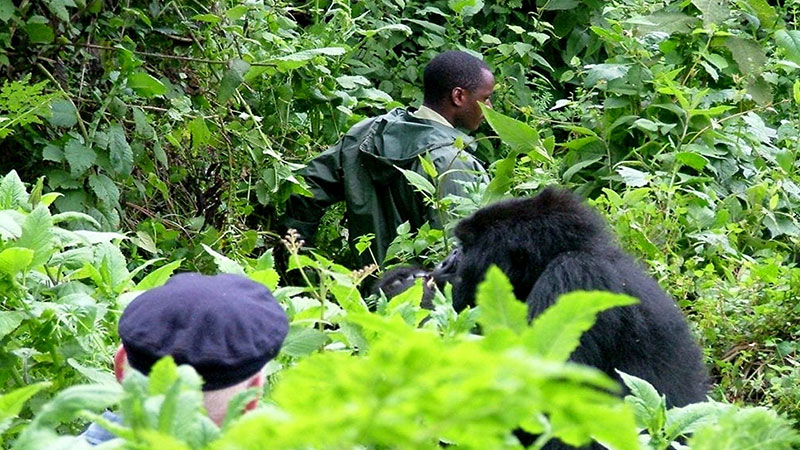
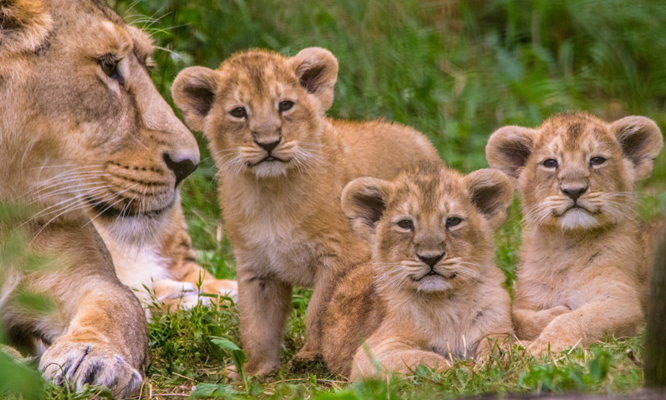
 Located in northwestern Uganda,
Located in northwestern Uganda,  Queen Elizabeth National Park, located in Kasese district in western Uganda, is yet another interesting destination for game viewing in Uganda. The Park is second to Murchison Falls National Park in terms of size, spreading over 1,978 square kilometers. This park offers diverse landscapes, from savannah plains to volcanic craters, and it’s famous for its tree-climbing lions in the Ishasha sector. In addition to the lions, Queen Elizabeth National Park has a high concentration of wild animals, which include Buffalos, Elephants, Leopards, Hyenas, Waterbucks, Uganda kobs, Warthogs, Topis, wild pigs, and a wide range of bird species.
Queen Elizabeth National Park, located in Kasese district in western Uganda, is yet another interesting destination for game viewing in Uganda. The Park is second to Murchison Falls National Park in terms of size, spreading over 1,978 square kilometers. This park offers diverse landscapes, from savannah plains to volcanic craters, and it’s famous for its tree-climbing lions in the Ishasha sector. In addition to the lions, Queen Elizabeth National Park has a high concentration of wild animals, which include Buffalos, Elephants, Leopards, Hyenas, Waterbucks, Uganda kobs, Warthogs, Topis, wild pigs, and a wide range of bird species. Having been ranked as the “True African Wilderness” Kidepo Valley National Park offers a more virgin game viewing experience. The park is located in the far northeastern part of Uganda in Karamoja region and it’s the least visited tourism destination in the Pearl of Africa. The few visits to the park have kept Kidepo Valley Park virgin, offering an off-beaten kind of experience. The park offers stunning scenery and a variety of wildlife, including Lions, cheetahs, Giraffes, Waterbucks, Uganda kobs, Warthogs, Topis, Oribis, Gazelles, and Elephants. The other interesting activities done in Kidepo Valley National Park include bird watching, Community tours, Nature Walks, Rock climbing
Having been ranked as the “True African Wilderness” Kidepo Valley National Park offers a more virgin game viewing experience. The park is located in the far northeastern part of Uganda in Karamoja region and it’s the least visited tourism destination in the Pearl of Africa. The few visits to the park have kept Kidepo Valley Park virgin, offering an off-beaten kind of experience. The park offers stunning scenery and a variety of wildlife, including Lions, cheetahs, Giraffes, Waterbucks, Uganda kobs, Warthogs, Topis, Oribis, Gazelles, and Elephants. The other interesting activities done in Kidepo Valley National Park include bird watching, Community tours, Nature Walks, Rock climbing Pian Upe Wildlife Reserve is Uganda’s second-largest tourism destination in Uganda after Murchison Falls National Park. The reserve is nestled in northeastern Uganda, spreading over 2,275 square kilometers of Land comprised of open acacia, woodlands, riverine forests, wetlands, caves, and Volcanic rocks. Game viewing, bird watching, nature walks, and scenic viewing are the top tourist activities at Pan Upe Wildlife Reserve
Pian Upe Wildlife Reserve is Uganda’s second-largest tourism destination in Uganda after Murchison Falls National Park. The reserve is nestled in northeastern Uganda, spreading over 2,275 square kilometers of Land comprised of open acacia, woodlands, riverine forests, wetlands, caves, and Volcanic rocks. Game viewing, bird watching, nature walks, and scenic viewing are the top tourist activities at Pan Upe Wildlife Reserve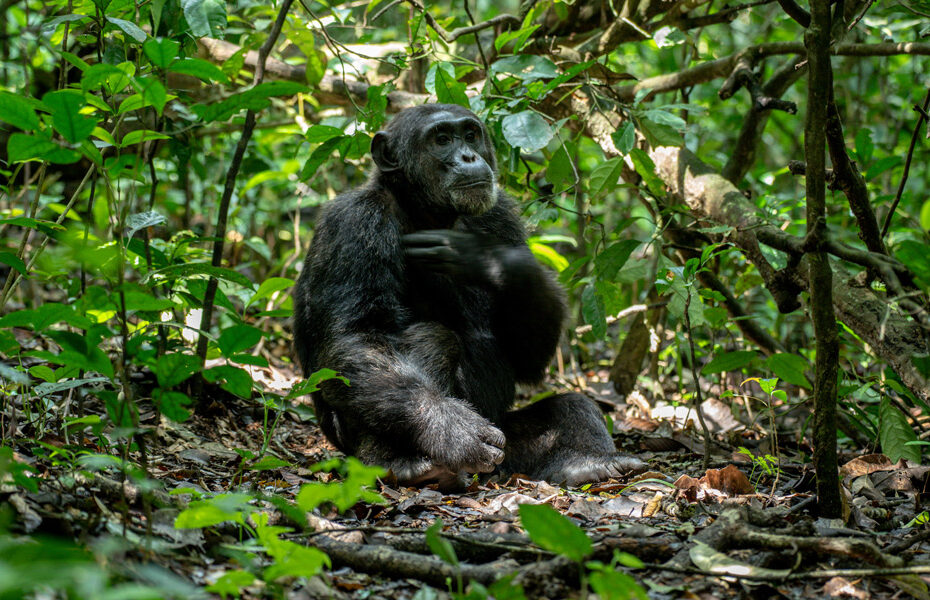
 Located in western Uganda, Kibale Forest National Park is the most popular destination for chimpanzee trekking in Uganda, renowned for its high chimpanzee density and diverse ecosystem. Kibale National Park is a MUST visit in Uganda for chimpanzee trekking. The forest is also known as the “ Primate Capital of the World”, sheltering 13 primate species for which the Chimpanzees are sought after! Chimpanzee Tracking introduces you to the closely related Cousins of human beings. Kibale Forest is so natural that all you listen to, are the sounds of wildlife! Chimpanzee trekking in Kibale Forest begins at Kanyanchu Visitor Information Centre where travelers are first registered and briefed on the dos and don’ts of the adventure. Our 3 days chimpanzee trek in Kibale Forest is the suitable package for you combined with a nature walk in Bigodi wetland sanctuary
Located in western Uganda, Kibale Forest National Park is the most popular destination for chimpanzee trekking in Uganda, renowned for its high chimpanzee density and diverse ecosystem. Kibale National Park is a MUST visit in Uganda for chimpanzee trekking. The forest is also known as the “ Primate Capital of the World”, sheltering 13 primate species for which the Chimpanzees are sought after! Chimpanzee Tracking introduces you to the closely related Cousins of human beings. Kibale Forest is so natural that all you listen to, are the sounds of wildlife! Chimpanzee trekking in Kibale Forest begins at Kanyanchu Visitor Information Centre where travelers are first registered and briefed on the dos and don’ts of the adventure. Our 3 days chimpanzee trek in Kibale Forest is the suitable package for you combined with a nature walk in Bigodi wetland sanctuary Located in Murchison Falls National Park, Budongo forest is yet another popular destination for chimpanzee trekking in Uganda. This pristine rainforest is home to a significant chimpanzee population, offering visitors the opportunity to observe these fascinating creatures in their natural environment. The contact rate here is around 80%, ensuring a high probability of a successful encounter. Enjoy an encounter with the endangered chimpanzees playing and chasing each other in your presence. Budongo Forest is normally muddy, long pants tucked into the boots is highly recommended to keep the aunts out
Located in Murchison Falls National Park, Budongo forest is yet another popular destination for chimpanzee trekking in Uganda. This pristine rainforest is home to a significant chimpanzee population, offering visitors the opportunity to observe these fascinating creatures in their natural environment. The contact rate here is around 80%, ensuring a high probability of a successful encounter. Enjoy an encounter with the endangered chimpanzees playing and chasing each other in your presence. Budongo Forest is normally muddy, long pants tucked into the boots is highly recommended to keep the aunts out Also known as the “Valley of Apes” Kyambura gorge offers you an exceptional chimpanzee trekking experience. Enjoy a chimpanzee trek in the underground of Kyambura Gorge located in the heart of Queen Elizabeth National Park. This dramatic gorge offers breathtaking views and a chance to spot chimpanzees in a stunning setting. While the contact rate here is lower than in Kibale and Budongo, the sheer beauty of the gorge makes it a worthwhile destination
Also known as the “Valley of Apes” Kyambura gorge offers you an exceptional chimpanzee trekking experience. Enjoy a chimpanzee trek in the underground of Kyambura Gorge located in the heart of Queen Elizabeth National Park. This dramatic gorge offers breathtaking views and a chance to spot chimpanzees in a stunning setting. While the contact rate here is lower than in Kibale and Budongo, the sheer beauty of the gorge makes it a worthwhile destination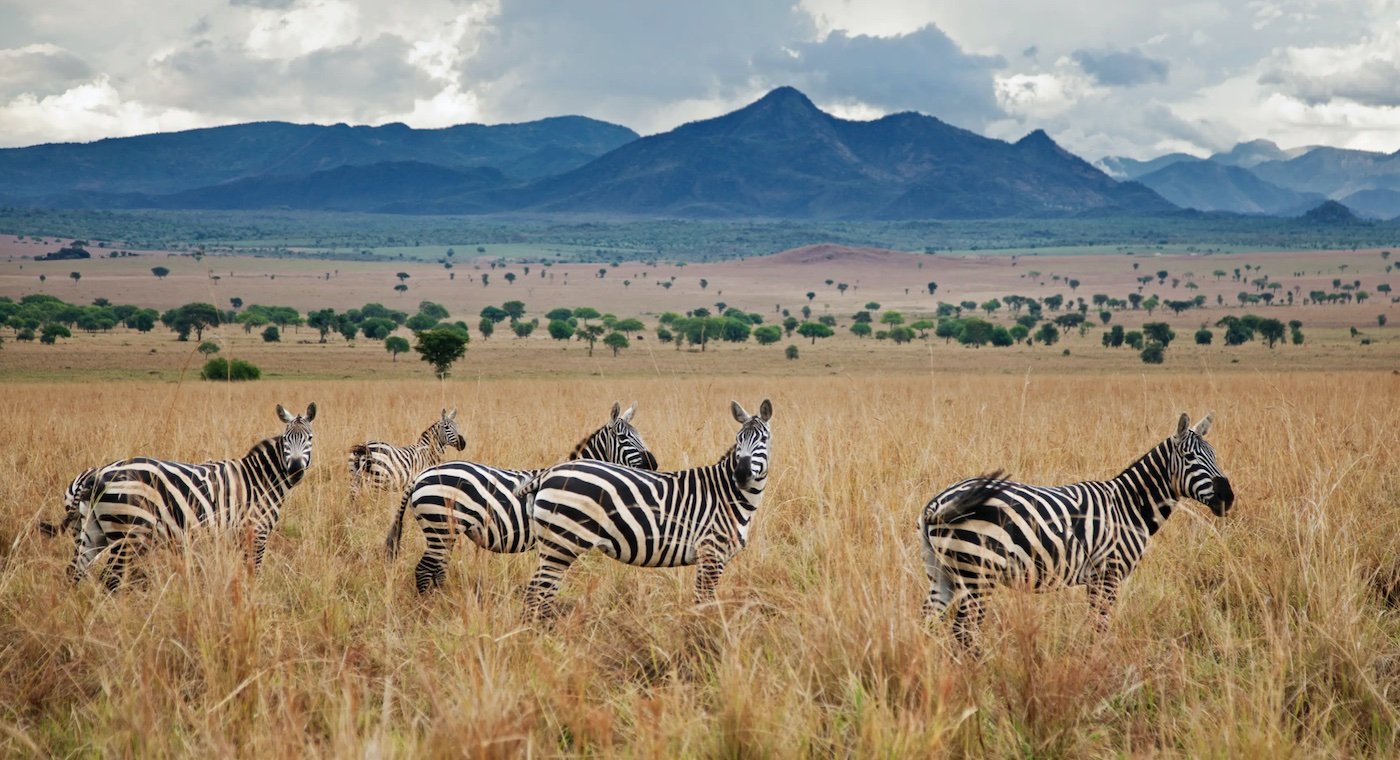
 Being home to a diverse range of
Being home to a diverse range of  A visit to local communities for a cultural performance is another interesting experience in Kidepo Valley National Park. Enjoy a visit to the Karamajo communities, the nomadic pastoralists who are believed to have migrated from Ethiopia in the 1600s. There you will learn about cattle keeping, milking, and how to process milk into different products. The other common tribe to visit in Kidepo Valley National Park are the IK people living in Murongole Mountain. These people were former hunter-gatherers who migrated from Ethiopia and first settled in Kenya before crossing to Uganda. The IK people are now surviving on beekeeping and subsistence farming. A cultural tour offers you the chance to learn and experience the traditions, norms, customs, and beliefs of these Indigenous people, Traditional dances and songs are performed as a gesture to welcome you to their communities
A visit to local communities for a cultural performance is another interesting experience in Kidepo Valley National Park. Enjoy a visit to the Karamajo communities, the nomadic pastoralists who are believed to have migrated from Ethiopia in the 1600s. There you will learn about cattle keeping, milking, and how to process milk into different products. The other common tribe to visit in Kidepo Valley National Park are the IK people living in Murongole Mountain. These people were former hunter-gatherers who migrated from Ethiopia and first settled in Kenya before crossing to Uganda. The IK people are now surviving on beekeeping and subsistence farming. A cultural tour offers you the chance to learn and experience the traditions, norms, customs, and beliefs of these Indigenous people, Traditional dances and songs are performed as a gesture to welcome you to their communities Be part of the guided mountain climbing experiences in Kidepo Valley National Park with Authentic Africa Safaris. The isolated park is home to Mount Murongole, Mount Lonyilli, and Mount Zulia. A hike to the summit of any Volcano offers you great views of the neighboring local communities and the whole park with wildlife there.
Be part of the guided mountain climbing experiences in Kidepo Valley National Park with Authentic Africa Safaris. The isolated park is home to Mount Murongole, Mount Lonyilli, and Mount Zulia. A hike to the summit of any Volcano offers you great views of the neighboring local communities and the whole park with wildlife there.
 Sheltering the one and only Nyakagyezi gorilla family, Mgahinga Gorilla National Park is one of the four national parks where endangered gorillas are seen. Mountain gorilla trekking is undoubtedly the park’s most popular activity. Enjoy the trek through the dense montane forests to encounter the majestic mountain gorillas. The experience of spending an hour with these gentle giants is truly unforgettable and has been ranked as the best wildlife experience in the world.
Sheltering the one and only Nyakagyezi gorilla family, Mgahinga Gorilla National Park is one of the four national parks where endangered gorillas are seen. Mountain gorilla trekking is undoubtedly the park’s most popular activity. Enjoy the trek through the dense montane forests to encounter the majestic mountain gorillas. The experience of spending an hour with these gentle giants is truly unforgettable and has been ranked as the best wildlife experience in the world. YES, golden monkey trekking is another interesting adventure done in
YES, golden monkey trekking is another interesting adventure done in  Bird watching is another interesting activity that draws travelers to Mgahinga Gorilla National Park. Mgahinga shelters over 180 bird species 12 of which are endemic to the Albertine region. Some of the notable birds seen in the Mgahinga Gorilla National Park include the Black Kite, Cape Robin Chat, African Paradise Flycatcher, Black Kite, Moorland Chat, African Olive Pigeon, Alpine Swift and Blu-headed Coucal among others. April to mid-May and October to November are regarded as the best time for bird watching in Mgahinga Gorilla National Park. November to April is the best time to see migratory birds in Mgahinga Gorilla National Park
Bird watching is another interesting activity that draws travelers to Mgahinga Gorilla National Park. Mgahinga shelters over 180 bird species 12 of which are endemic to the Albertine region. Some of the notable birds seen in the Mgahinga Gorilla National Park include the Black Kite, Cape Robin Chat, African Paradise Flycatcher, Black Kite, Moorland Chat, African Olive Pigeon, Alpine Swift and Blu-headed Coucal among others. April to mid-May and October to November are regarded as the best time for bird watching in Mgahinga Gorilla National Park. November to April is the best time to see migratory birds in Mgahinga Gorilla National Park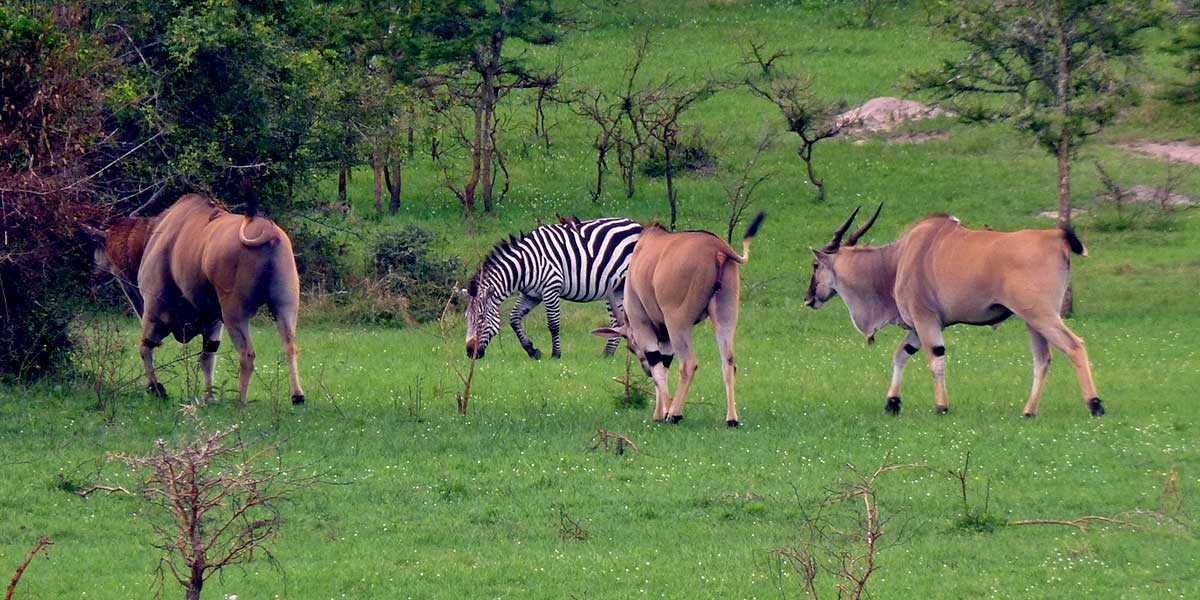
 Lake Mburo National Park is renowned for its unique wildlife encounters. Wildlife in the park include Ungulates, predators, and mammals. The common animals seen in Lake Mburo National Park include Zebras, Buffalos, Elands, Topis, Warthogs, Waterbucks, Leopards, Hyenas, Hippos, crocodiles, wild pigs, and Uganda kobs among others. These animals are best seen during game drives, nature walks, and on a boat cruise
Lake Mburo National Park is renowned for its unique wildlife encounters. Wildlife in the park include Ungulates, predators, and mammals. The common animals seen in Lake Mburo National Park include Zebras, Buffalos, Elands, Topis, Warthogs, Waterbucks, Leopards, Hyenas, Hippos, crocodiles, wild pigs, and Uganda kobs among others. These animals are best seen during game drives, nature walks, and on a boat cruise Game viewing is the number one travel experience done in Lake Mburo National Park. Scheduled game drives in the morning, evening, and night offer travelers a chance to see a variety of wild animals hunting, browsing, and grazing. Early morning and late afternoon drives offer the best opportunities for wildlife sightings. Expect to see a variety of wild animals which include Bufallos, Giraffes, Zebras, Uganda Kobs, Topis, Waterbucks, Warthogs, Elands, Leopards and Hyenas among others. Our experienced guides at Authentic Africa Safaris help you spot wild animals in the wilderness and also explain more about each spotted animal and what makes it unique from other animals. The
Game viewing is the number one travel experience done in Lake Mburo National Park. Scheduled game drives in the morning, evening, and night offer travelers a chance to see a variety of wild animals hunting, browsing, and grazing. Early morning and late afternoon drives offer the best opportunities for wildlife sightings. Expect to see a variety of wild animals which include Bufallos, Giraffes, Zebras, Uganda Kobs, Topis, Waterbucks, Warthogs, Elands, Leopards and Hyenas among others. Our experienced guides at Authentic Africa Safaris help you spot wild animals in the wilderness and also explain more about each spotted animal and what makes it unique from other animals. The  Being home to over 350 bird species, Lake Mburo National Park is undeniably a haven for birders. The park is the best place to see Acacia bird species and some forest birds seen in Rubanga Forest. Some of the notable birds seen in Lake Mburo National Park include African Wattled Lapwing, Black Bellied Bustard, Saddled billed stork, Greater Painted Snipe, African finfoot, Blue-headed Coucal, Shoebill, Papyrus Gonelok, Hairy Breasted Barbet, Mosque Swallow, Yellow-Rumped Tinkerbird and Papyrus Yellow Warbler among others. June and July are the best time for bird watching in Lake Mburo National Park when there are no rains. Migratory birds are seen between November and April. However, Birding can be done all year round.
Being home to over 350 bird species, Lake Mburo National Park is undeniably a haven for birders. The park is the best place to see Acacia bird species and some forest birds seen in Rubanga Forest. Some of the notable birds seen in Lake Mburo National Park include African Wattled Lapwing, Black Bellied Bustard, Saddled billed stork, Greater Painted Snipe, African finfoot, Blue-headed Coucal, Shoebill, Papyrus Gonelok, Hairy Breasted Barbet, Mosque Swallow, Yellow-Rumped Tinkerbird and Papyrus Yellow Warbler among others. June and July are the best time for bird watching in Lake Mburo National Park when there are no rains. Migratory birds are seen between November and April. However, Birding can be done all year round. Explore Lake Mburo National Park differently by taking part in experimental horseback riding. Mihingo Lodge is the chief organizer for horseback riding in the Park. This is a serene and unforgettable way to explore the landscape.
Explore Lake Mburo National Park differently by taking part in experimental horseback riding. Mihingo Lodge is the chief organizer for horseback riding in the Park. This is a serene and unforgettable way to explore the landscape.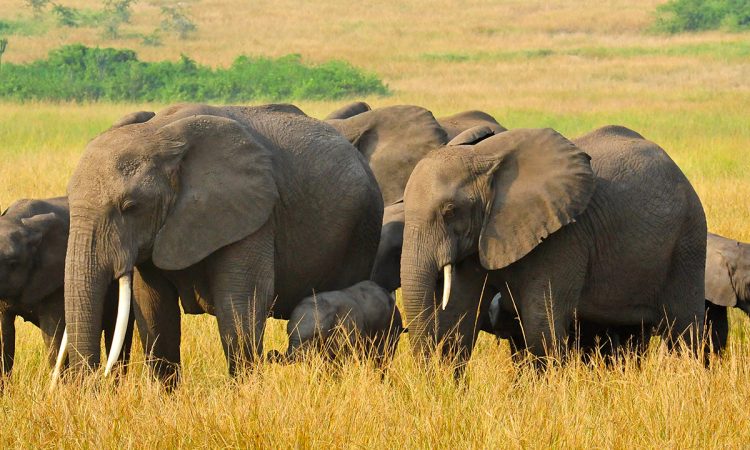
 Game viewing is the prime tourist attraction in Queen Elizabeth National Park. Yes, guided game drives are scheduled for early morning and evening hours to allow travelers to enjoy close encounters with wild animals in their natural habitats. If you want you can have a full day of game drives to different parts of the park for a wide range of game-life interactions. Night game drives are also arranged to allow travelers to encounter nocturnal animals that are active at night.
Game viewing is the prime tourist attraction in Queen Elizabeth National Park. Yes, guided game drives are scheduled for early morning and evening hours to allow travelers to enjoy close encounters with wild animals in their natural habitats. If you want you can have a full day of game drives to different parts of the park for a wide range of game-life interactions. Night game drives are also arranged to allow travelers to encounter nocturnal animals that are active at night. Done at Kazinga Channel, Boat cruising is yet another interesting activity, a not miss on your Uganda safari to Queen Elizabeth National Park. Kazinga channel is a 40-kilometer-long river stream which connects Lakes Edward and Goerge. A 2-3 hour boat cruise on Kazinga channel offers you spectacular views of the park, wild waters animals, and birds seen on the banks of the river. Boat cruising is scheduled for morning and afternoon to give all travelers a chance to enjoy.
Done at Kazinga Channel, Boat cruising is yet another interesting activity, a not miss on your Uganda safari to Queen Elizabeth National Park. Kazinga channel is a 40-kilometer-long river stream which connects Lakes Edward and Goerge. A 2-3 hour boat cruise on Kazinga channel offers you spectacular views of the park, wild waters animals, and birds seen on the banks of the river. Boat cruising is scheduled for morning and afternoon to give all travelers a chance to enjoy. Go chimpanzee trekking in Kyambura Gorge located within Queen Elizabeth National Park. Chimpanzee communities have been habituated for trekking in Kyambura gorge. Treks to see these chimpanzees begin at 8:00 am guided by armed rangers who escort travelers to and and from the forest. Each permit to trek chimpanzees in Kyambura Gorge costs $100 allowing you to spend an hour with these endangered primates. The other places to see chimpanzees near Queen Elizabeth National Park include Kalinzu Forest
Go chimpanzee trekking in Kyambura Gorge located within Queen Elizabeth National Park. Chimpanzee communities have been habituated for trekking in Kyambura gorge. Treks to see these chimpanzees begin at 8:00 am guided by armed rangers who escort travelers to and and from the forest. Each permit to trek chimpanzees in Kyambura Gorge costs $100 allowing you to spend an hour with these endangered primates. The other places to see chimpanzees near Queen Elizabeth National Park include Kalinzu Forest Do not miss visiting the various crater lakes located in different corners of Queen Elizabeth National Park. The crater lakes to visit include Lake Katwe known for salt morning, Lake Nyamunuka believed to have healing water where injured animals get healed, Lake Munyanyange famous for the lesser and greater flamingoes, Lake Bunyampaka, and Lake Nyamusingire among others. Each lake has a unique story behind it and hence worth visiting.
Do not miss visiting the various crater lakes located in different corners of Queen Elizabeth National Park. The crater lakes to visit include Lake Katwe known for salt morning, Lake Nyamunuka believed to have healing water where injured animals get healed, Lake Munyanyange famous for the lesser and greater flamingoes, Lake Bunyampaka, and Lake Nyamusingire among others. Each lake has a unique story behind it and hence worth visiting.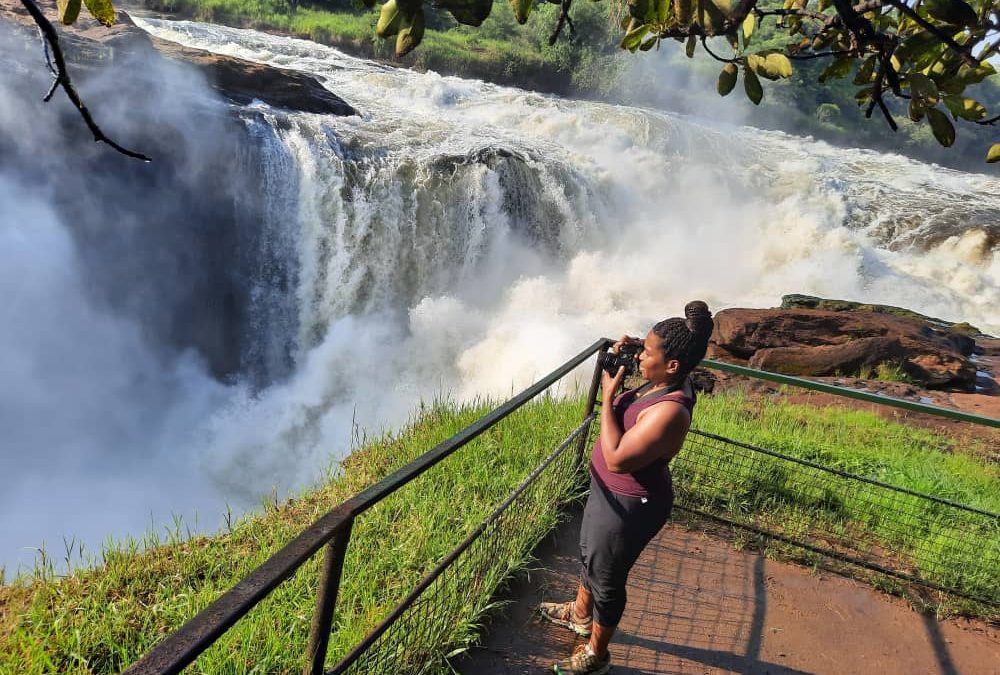
 Murchison Falls National Park is renowned for its remarkable wildlife diversity. Visitors have the opportunity to encounter a wide variety of wildlife. These include mammals such as Elephants, hippos, lions, buffalo, giraffes, Uganda kobs, and numerous antelope species. For birders, Murchison Falls National Park shelters over 450 bird species some of which are not found anywhere else in the world. Some of the notable birds seen in Murchison Falls include Black Headed Lapwing, Senegal thick-knee, Shoebill, Grey Crowned Crane, Abyssinian Ground Hornbill, African Jacana, Palm Nut Vulture, Black Headed Genolok, and Goliath Heron. January to March is the best time for bird watching in Murchison Falls National Park. For primate lovers, Murchison Falls Park shelters chimpanzees in Budongo Forest, Red tailed monkeys, and Olive baboons among others
Murchison Falls National Park is renowned for its remarkable wildlife diversity. Visitors have the opportunity to encounter a wide variety of wildlife. These include mammals such as Elephants, hippos, lions, buffalo, giraffes, Uganda kobs, and numerous antelope species. For birders, Murchison Falls National Park shelters over 450 bird species some of which are not found anywhere else in the world. Some of the notable birds seen in Murchison Falls include Black Headed Lapwing, Senegal thick-knee, Shoebill, Grey Crowned Crane, Abyssinian Ground Hornbill, African Jacana, Palm Nut Vulture, Black Headed Genolok, and Goliath Heron. January to March is the best time for bird watching in Murchison Falls National Park. For primate lovers, Murchison Falls Park shelters chimpanzees in Budongo Forest, Red tailed monkeys, and Olive baboons among others A boat cruise to the bottom of Murchison Falls National Park is yet another interesting experience. Enjoy the serenity of the Nile River on a boat cruise, witnessing hippos, crocodiles, and a plethora of birdlife.
A boat cruise to the bottom of Murchison Falls National Park is yet another interesting experience. Enjoy the serenity of the Nile River on a boat cruise, witnessing hippos, crocodiles, and a plethora of birdlife.
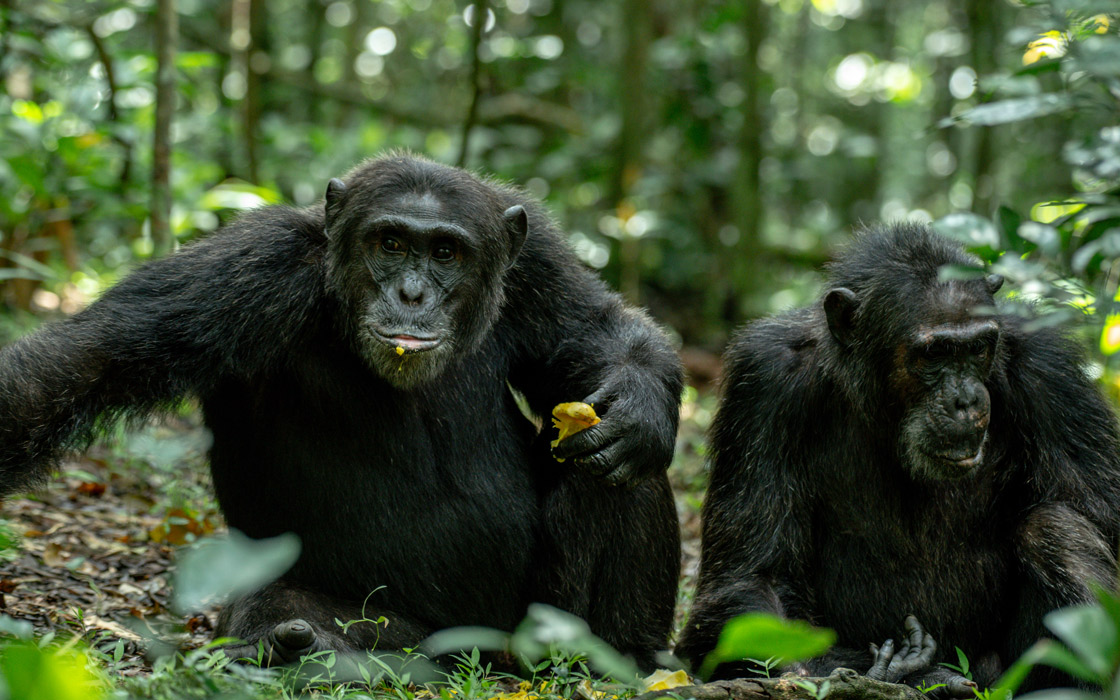

 One of the most popular activities in Kibale is chimpanzee trekking. This exciting experience allows visitors to track these intelligent primates through the dense forest, observing their natural behaviors firsthand. Kibale Forest National Park boasts a significant population of habituated chimpanzees which gives many travelers a chance to encounter these endangered primates. Trekking to see chimpanzees is quiet but worth it. Spend an hour with chimpanzees who put on a wonderful display, posing, chilling & playing around travelers. Take time to learn about the chimps, their habits, and their lifestyle. Each permit to trek chimpanzees in Kibale Forest National Park costs $250 for foreign nonresidents, $200 for foreign residents, and 250,000 shillings. Authentic Africa Safaris helps you secure permits in time and also arranges a tailor-made chimpanzee trekking package suitable for your budget, time, and interests
One of the most popular activities in Kibale is chimpanzee trekking. This exciting experience allows visitors to track these intelligent primates through the dense forest, observing their natural behaviors firsthand. Kibale Forest National Park boasts a significant population of habituated chimpanzees which gives many travelers a chance to encounter these endangered primates. Trekking to see chimpanzees is quiet but worth it. Spend an hour with chimpanzees who put on a wonderful display, posing, chilling & playing around travelers. Take time to learn about the chimps, their habits, and their lifestyle. Each permit to trek chimpanzees in Kibale Forest National Park costs $250 for foreign nonresidents, $200 for foreign residents, and 250,000 shillings. Authentic Africa Safaris helps you secure permits in time and also arranges a tailor-made chimpanzee trekking package suitable for your budget, time, and interests Wondering where to stay in Kibale Forest National Park? No worries, a variety of accommodation facilities both budget. Midrange and Luxury have been put up to offer you with excellent and affordable food and sleeping services. Kibale Forest National Park offers a range of accommodation options to suit various budgets and preferences. From budget-friendly campsites to luxurious lodges, there’s something suitable for everyone.
Wondering where to stay in Kibale Forest National Park? No worries, a variety of accommodation facilities both budget. Midrange and Luxury have been put up to offer you with excellent and affordable food and sleeping services. Kibale Forest National Park offers a range of accommodation options to suit various budgets and preferences. From budget-friendly campsites to luxurious lodges, there’s something suitable for everyone. Just like in other primate parks in Uganda, travelers to Kibale Forest National Park are reminded to carry the essentials to ensure a peaceful and enjoyable chimpanzee trekking experience. Some of the things you should carry when visiting Kibale Forest include:
Just like in other primate parks in Uganda, travelers to Kibale Forest National Park are reminded to carry the essentials to ensure a peaceful and enjoyable chimpanzee trekking experience. Some of the things you should carry when visiting Kibale Forest include: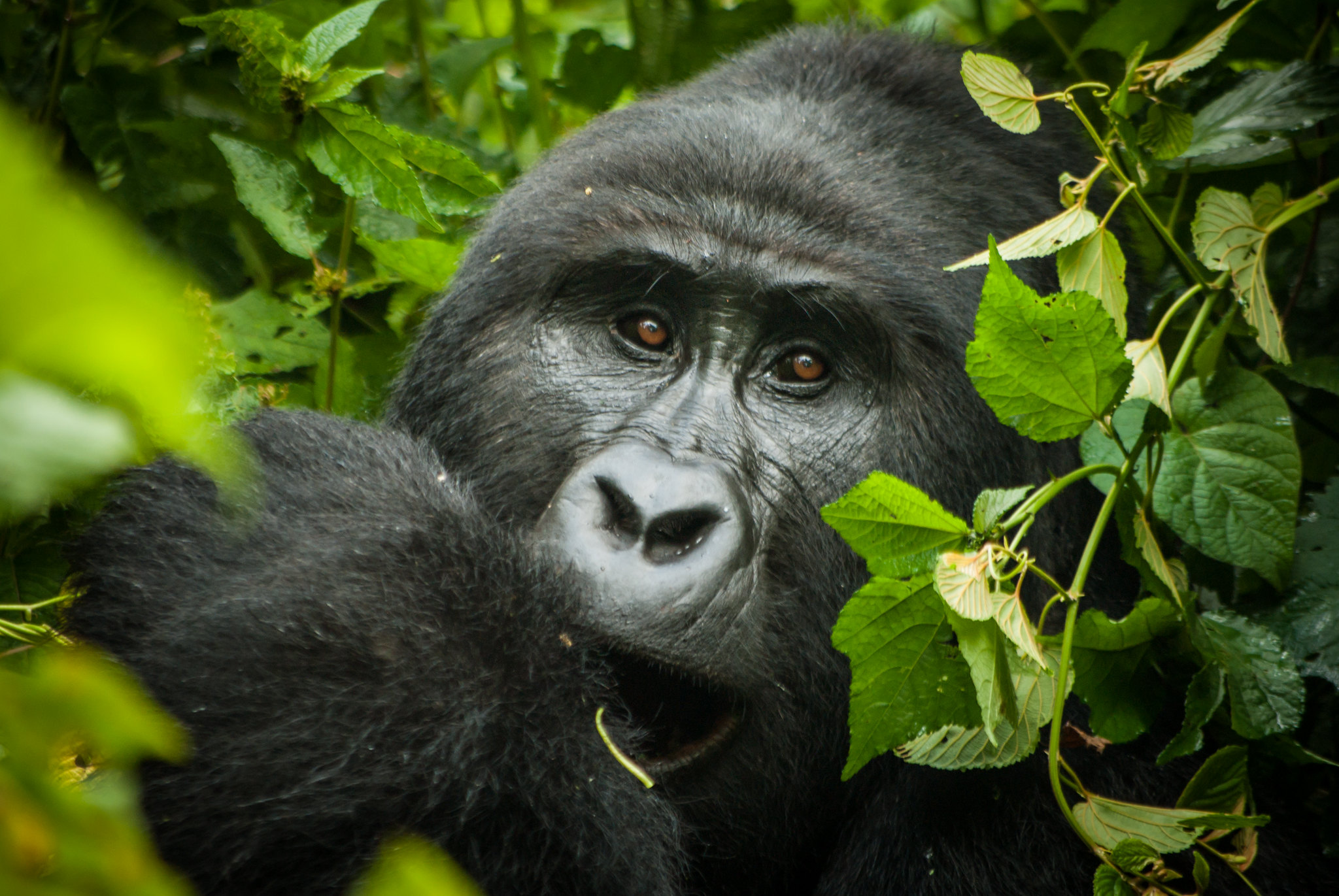
 In addition to gorilla trekking, Bwindi Impenetrable Forest National Park offers travelers with extra experiences to make a complete package. The other activities in the Bwindi forest include:
In addition to gorilla trekking, Bwindi Impenetrable Forest National Park offers travelers with extra experiences to make a complete package. The other activities in the Bwindi forest include: For any person planning a gorilla trekking safari to Bwindi Impenetrable Forest National Park, ensure the following
For any person planning a gorilla trekking safari to Bwindi Impenetrable Forest National Park, ensure the following